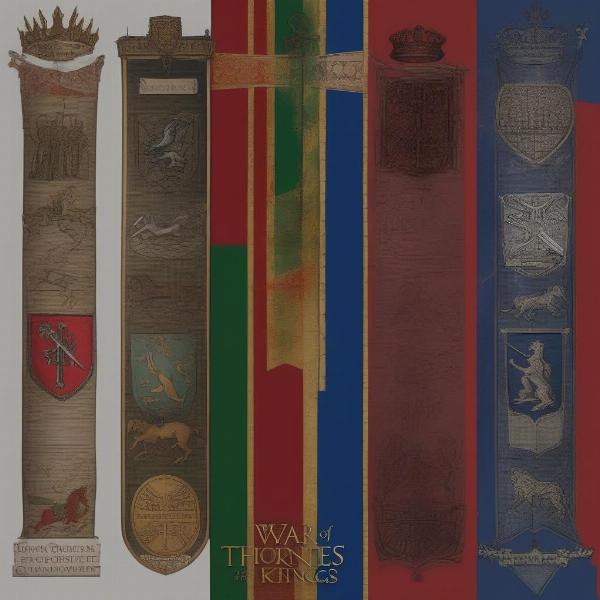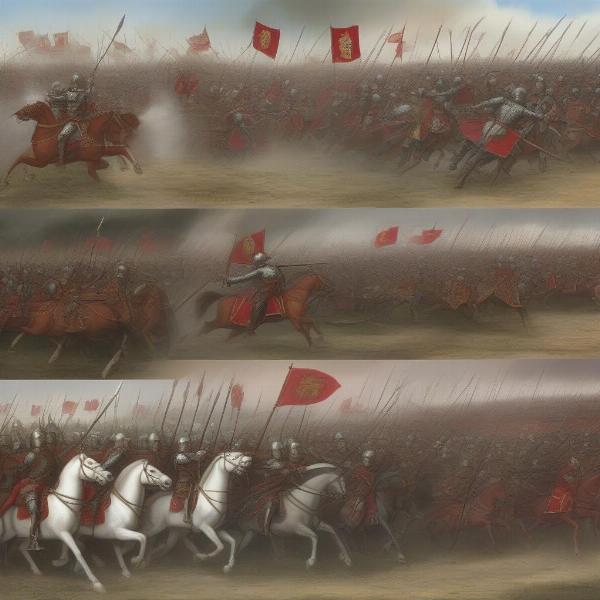The brutal, intricate world of George R.R. Martin’s “A Song of Ice and Fire” often draws comparisons to real-world historical events, and few parallels are as striking as the connection between the war of the roses game of thrones and the English Wars of the Roses. At Supreme Duelist Blog, we delve deep into these historical echoes, dissecting the power struggles, betrayals, and the human cost of these conflicts, both fictional and factual. This analysis examines the parallels between these two periods of internal strife, providing insight into the strategic complexities and dramatic storylines that make them both so compelling.
This piece will explore the significant similarities and differences between the fictional War of the Five Kings and the historical Wars of the Roses, drawing insights from both the narrative and the real world. We will also look into how these conflicts shape the overall themes and narratives within their respective stories and history. By examining the strategic and personal decisions that fueled these conflicts, we can gain a deeper appreciation for the intricate plots of “Game of Thrones” and the historical weight of the English civil war.
The Seeds of Conflict: Succession and Power
Both the war of the roses game of thrones and the Wars of the Roses were born from questions of succession and the insatiable hunger for power. In Westeros, the death of King Robert Baratheon initiates a violent struggle for the Iron Throne, with numerous factions vying for dominance. This mirrors the 15th-century English conflict, where the Houses of Lancaster and York battled for control of the English crown, each with a legitimate claim based on bloodlines and royal lineage.
The death of a ruler, whether by illness, accident, or assassination, created a vacuum that ambitious lords were eager to fill. This power vacuum was the stage set for both the War of the Five Kings and the Wars of the Roses, and as we analyze further, it will be clear that this common starting point led to much more shared ground than what one might initially think. Both situations showcased the raw ambition and the lengths people would go to for control.
 game of thrones war of roses kings
game of thrones war of roses kings
The Key Players: Parallels and Contrasts
The characters within “Game of Thrones” and the key figures in the Wars of the Roses often show striking parallels in their personalities, motivations, and strategic choices. For example, the cunning and ambitious Cersei Lannister bears some resemblance to Margaret of Anjou, a fierce queen who fought tirelessly to secure her son’s inheritance. Likewise, the honorable but ultimately tragic figure of Eddard Stark mirrors the likes of Richard of York, a noble with legitimate claims but ultimately crushed by the political maneuverings of his opponents.
The strategic brilliance of Tywin Lannister can be compared to the shrewd political moves of Richard Neville, the Earl of Warwick, known as the “Kingmaker” for his ability to influence who sat on the English throne. Understanding these character parallels provides crucial insights into how the conflicts unfolded. The characters in the narrative aren’t merely figments of imagination, rather they stand as archetypes reflecting human nature and ambition, much like their historical counterparts.
The Brutality of War: Tactical and Strategic Implications
The tactical aspects of both the fictional and real wars were marked by devastating battles, sieges, and shifting alliances. In the war of 5 kings game of thrones, we witness everything from the Battle of the Whispering Wood to the siege of King’s Landing, each a testament to the brutal and chaotic nature of warfare. Similarly, the Wars of the Roses saw major engagements like the Battle of Towton, one of the bloodiest battles on English soil, showcasing the fierce determination and the terrible human cost of these conflicts.
The reliance on cavalry, infantry, and siege weaponry is apparent in both settings. Strategy involved complex maneuvers and often relied on the element of surprise, betrayals, and changing allegiances. Both narratives highlight how war not only impacts the battlefield but also reshapes the social and political landscapes. As Dr. Eleanor Vance, a historian of medieval warfare, noted, “The parallels between fictional and historical wars are often striking; they highlight the timeless nature of human conflict, where ambitions and strategies are employed with similar outcomes.”
 medieval warfare strategies in game of thrones
medieval warfare strategies in game of thrones
Alliances and Betrayals: The Shifting Sands of Power
One of the most consistent themes in both conflicts is the fluidity of alliances. In Westeros, characters shift loyalties as the tides of power change, from the Starks’ initial alliance with the Tullys to the Lannisters’ manipulations and betrayals. The Wars of the Roses also saw a similar pattern of shifting alliances, with the Earl of Warwick famously switching sides between the Yorks and Lancasters more than once. These frequent betrayals underscore the fickle nature of political alliances.
These betrayals often led to pivotal moments in both narratives, changing the course of battles and influencing long-term outcomes. The complex web of allegiances shows that in both fictional and real conflicts, the game of power is as much about whom you trust, as it is about the strength of your armies. The unpredictability of these allegiances was often the decisive factor in who won and lost.
The Human Cost: Impact of War on Society and Individuals
The human cost of the war of the roses game of thrones and the Wars of the Roses is devastating. In “Game of Thrones,” we witness the destruction of entire families, the corruption of the innocent, and the psychological scars that war leaves behind. In the real-world counterpart, the Wars of the Roses crippled the English aristocracy, decimated the population, and brought political instability for decades.
Both conflicts showcase the profound impact of war on ordinary people, from the devastation of homes to the constant threat of violence. The stories also show how societal structures are disrupted and how the long-term trauma of war affects the next generations. “War is a terrible thing,” said Professor Alistair Sterling, a historical sociologist, “both in fantasy and reality, it is the ordinary people who always bear the highest cost, making their struggles an important lens through which to view these events.”
The Role of Fate and Chance
Both the War of the Five Kings and the Wars of the Roses often present a sense that fate, chance, and unexpected circumstances play a significant role in determining the outcomes of conflicts. The sudden deaths of key leaders, unexpected betrayals, and the unpredictable nature of battles contribute to an atmosphere where the best-laid plans can quickly go awry. This element of unpredictability adds to the dramatic tension in both stories, reminding us that power is never absolute.
Moments of seemingly random events shift the momentum of the conflicts, making it clear that success is not always determined by strategic planning or military strength. The presence of luck and chance in these narratives adds a layer of depth, highlighting the fragility of power and the unpredictable nature of both war and life. If you’re wondering what time is the civil war game and whether to tune in, you might just be witnessing such a moment in real time.
A Lasting Legacy: Themes of Power and Ambition
The lessons from both these conflicts continue to resonate today. The themes of power, ambition, and betrayal depicted in both stories are timeless, demonstrating the enduring nature of human ambition and the devastating consequences when left unchecked. These narratives serve as cautionary tales about the dangers of factionalism and the importance of good governance.
The echoes of both the War of the Five Kings and the Wars of the Roses can be seen in modern politics and global conflicts, underscoring the importance of learning from history and fiction. The intricate complexities of these power struggles provide us with valuable insights into the dynamics of conflict and human behavior. Whether comparing star wars vs game of thrones or any other fantasy series, this analysis helps us understand why these conflicts remain captivating for readers and audiences around the world.
In conclusion, the parallels between the “Game of Thrones” War of the Roses and the historical English conflicts are profound, providing a deeper understanding of both narratives. The struggles for power, the shifting allegiances, and the brutal consequences of war are portrayed with a consistency that transcends time and genre. Through the analysis provided by Supreme Duelist Blog, we aim to present not just entertainment, but also valuable insights into the human condition and how ambition can lead to both spectacular triumphs and devastating losses. We invite you to delve deeper into this fascinating topic with us and continue exploring the complex world of strategy, power, and narrative.
Leave a Reply